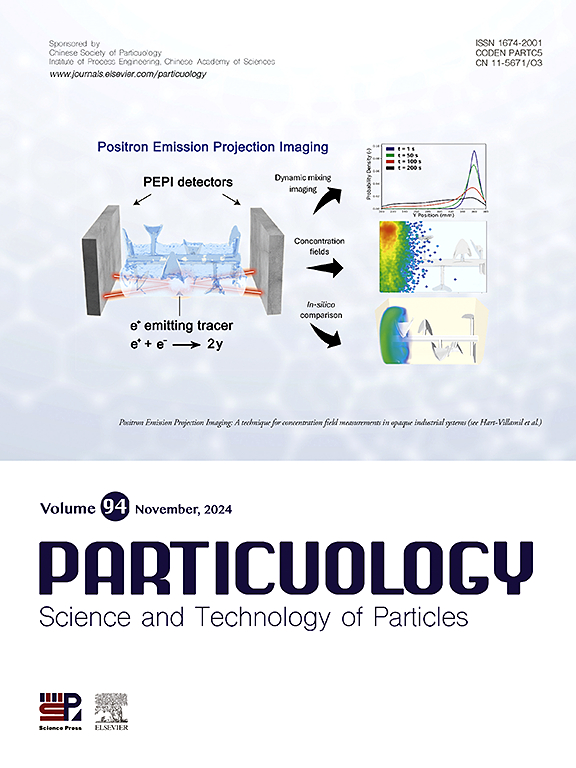Hydroxyapatite-based materials as catalysts: A review
IF 4.1
2区 材料科学
Q2 ENGINEERING, CHEMICAL
引用次数: 0
Abstract
Hydroxyapatite, a bioceramic material, possesses sufficient stability in aqueous and organic medium and it is mainly known for its role in tooth and bone structure. However, it is less-known that, in certain conditions, the HA can be used as a catalyst in its free, metal-doped and composite forms. HA as a catalyst is generally prepared by i mpregnation or co-precipitation methods, sometimes from natural P-containing wastes. HA can be doped with mono- or polymetallic ions or nanoparticles and can contain other admixtures or supports (i.e., carbon). Different Ca/P ratios (ideal 1.67; the ranges are 1.5–1.7 in synthetic and 1.5–1.8 in biologic forms) can be revealed for the HA. Nanosized HA forms are frequent in several applications. A variety of distinct processes can be HA-catalyzed, such as oxidation of alcohols, dehydrogenation, hydrogenation and hydrogenolysis, C-C bond formation, among other important existing low- and large-scale organic processes. The HA can be also used for catalytic environmental remediation, CO2 fixation, and N2O decomposition. In this review, we emphasize most recent advances (mainly last decade) on the catalytic HA applications, except for biomedical ones.

羟基磷灰石基催化剂研究进展
羟基磷灰石是一种生物陶瓷材料,在水和有机介质中具有足够的稳定性,主要以其在牙齿和骨骼结构中的作用而闻名。然而,鲜为人知的是,在某些条件下,羟基磷灰石可以自由、金属掺杂和复合形式用作催化剂。透明质酸作为催化剂通常通过浸渍或共沉淀法制备,有时从天然含磷废物中制备。透明质酸可以掺杂单金属或多金属离子或纳米颗粒,并且可以含有其他外加剂或载体(即碳)。不同Ca/P比值(理想值1.67;其范围为1.5-1.7(合成形式)和1.5-1.8(生物形式)。纳米级HA形式在许多应用程序中都很常见。各种不同的过程可以被ha催化,如醇的氧化、脱氢、加氢和氢解、C-C键的形成,以及其他重要的现有的低规模有机过程。HA还可用于催化环境修复、CO2固定和N2O分解。在这篇综述中,我们重点介绍了催化透明质酸的最新进展(主要是近十年),除了生物医学方面的应用。
本文章由计算机程序翻译,如有差异,请以英文原文为准。
求助全文
约1分钟内获得全文
求助全文
来源期刊

Particuology
工程技术-材料科学:综合
CiteScore
6.70
自引率
2.90%
发文量
1730
审稿时长
32 days
期刊介绍:
The word ‘particuology’ was coined to parallel the discipline for the science and technology of particles.
Particuology is an interdisciplinary journal that publishes frontier research articles and critical reviews on the discovery, formulation and engineering of particulate materials, processes and systems. It especially welcomes contributions utilising advanced theoretical, modelling and measurement methods to enable the discovery and creation of new particulate materials, and the manufacturing of functional particulate-based products, such as sensors.
Papers are handled by Thematic Editors who oversee contributions from specific subject fields. These fields are classified into: Particle Synthesis and Modification; Particle Characterization and Measurement; Granular Systems and Bulk Solids Technology; Fluidization and Particle-Fluid Systems; Aerosols; and Applications of Particle Technology.
Key topics concerning the creation and processing of particulates include:
-Modelling and simulation of particle formation, collective behaviour of particles and systems for particle production over a broad spectrum of length scales
-Mining of experimental data for particle synthesis and surface properties to facilitate the creation of new materials and processes
-Particle design and preparation including controlled response and sensing functionalities in formation, delivery systems and biological systems, etc.
-Experimental and computational methods for visualization and analysis of particulate system.
These topics are broadly relevant to the production of materials, pharmaceuticals and food, and to the conversion of energy resources to fuels and protection of the environment.
 求助内容:
求助内容: 应助结果提醒方式:
应助结果提醒方式:


